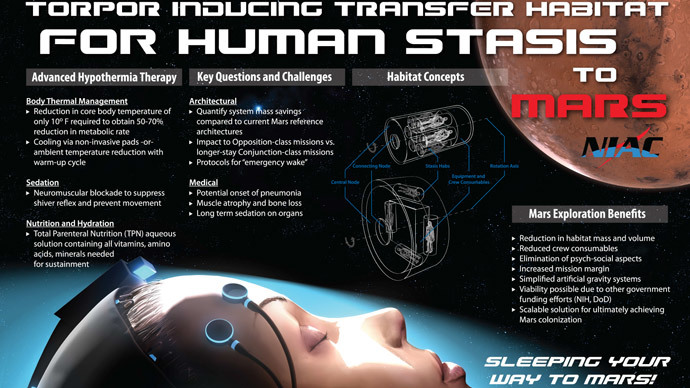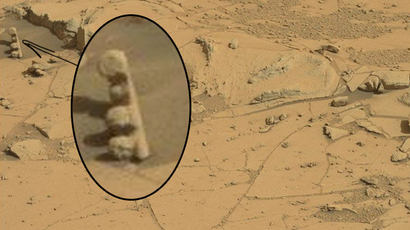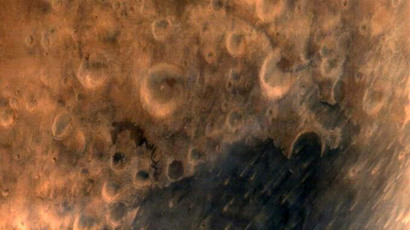NASA tests hibernation tech for future Mars mission

To dramatically cut the cost of its future manned missions to Mars, NASA is testing a sci-fi sounding technique of placing the crew in stasis. The deep sleep conditions would also reduce psychological challenges for the astronauts during the 180-day trip.
Adopting a technique commonly used in hospitals to bring about
stasis, or sleep, in patients undergoing critical care, NASA
partnered with Spaceworks, an aerospace engineering firm, to
research how inducing hibernation could benefit a crew traveling
for six months to Mars.
To bring about stasis astronauts would have their body
temperature lowered to around 89-93 degrees Fahrenheit (31.6 -
33.9 Celsius) resulting in significant drop of the heart and
respiration rates. To do so a tube will be inserted in their nose
which releases a cooling agent while the sleeping crew member is
fed through an intravenous tube. The crew would be kept in that
condition for the entire trip or rotated in and out of deep sleep
in shifts.
Awakening the astronaut would be done by either stopping the flow
of the cooling agent, or by using warming pads to speed up the
process, according to NASA. “A means for full
cryo-preservation and restoration remains a long way off
still,” NASA added in a statement.
READ MORE: #SpaceBuddies: India’s chatty Mars orbiter spurs flurry of Red Planet tweets
Exploring these techniques, NASA funded one week of tests on
humans, and the results were promising. The agency says more
research is needed, but if stasis proves feasible, it could
reduce the overall mass of a Mars flight from 400 to 220 tons
since it will reduce amounts of food, water and workout gear to
bring a crew safely there and back.
NASA Eyes Crew Deep Sleep Option for Mars Mission : Discovery News http://t.co/ec1uAdbdOn
— The Mars Society (@TheMarsSociety) October 5, 2014
Therapeutic torpor has evolved from a theory into a common tool
for treating critical care trauma patients in hospitals over the
past decades, Mark Schaffer, aerospace engineer for SpaceWorks
Enterprises said at the International Astronomical Congress in
Toronto last week.
“We haven't had the need to keep someone in (hibernation) for
longer than seven days,” Schaffer said cited by Discovery.
“For human Mars missions, we need to push that to 90 days,
180 days. Those are the types of mission flight times we're
talking about.”
READ MORE: Life on Mars oddities: ‘Traffic light’ and perfectly-shaped ball spotted on Red Planet
Scientists have been studying torpor/hibernation in Black Bears,
Arctic Ground Squirrel and Dwarf Lemur to understand the process
that the animal undergoes and how those processes change on
waking. These animals can typically hibernate from three to six
months.
According to Spaceworks hibernation would cut the prohibitive
expenses of maintaining a crew on its trip to Mars by reducing
food needs, the need for pressurized volume for living quarters,
cut out facilities like a food galley and exercise equipment, and
minimize psychological challenges for the crew.














